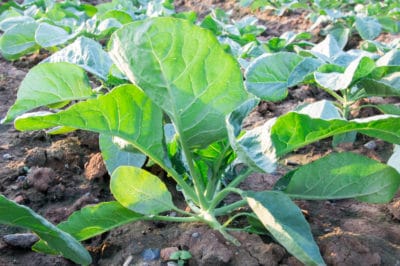Temperature
Cauliflower belongs to the brassica or cabbage family of vegetables. All of these veggies like it cool and do not perform well in summer heat. If there is a number one rule to growing brassicas, it’s: keep them below 75°F (23.8°C). Obviously, this impacts your planting schedule. There are a few tricks to getting cauliflower to perform in mid-summer:
- Keep ground cool and moist with mulch
- Plant in an area that receives shade during the hottest parts of the day
- Plant with companions that help to shade and keep plants cool
Timing
Because of its temperature requirements, cauliflower is considered a cool-season vegetable. This means that it’s typically grown during the cooler seasons of spring and fall. Many farmers will only grow cauliflower in the fall because temperatures drop as the plant reaches maturity and keeps it from going to seed.
Spring Planting
Cauliflower can take a frost, but not quite a freeze. Spring plantings should go in the ground two to four weeks before the last frost. You can get a head start on the season by starting plants inside a greenhouse four to five weeks earlier than they can go outside. Then, transplant your starts outside two to four weeks before the last frost of the year.
Fall Planting
Fall plantings are often easier than spring plantings. Not only do dropping temperatures keep the plant from bolting, but the summer heat is welcome as the seed germinates. Start fall plantings six to eight weeks before the first frost.
Acclimation
Remember when transplanting from a greenhouse to outside to acclimate your plants. This adjustment period allows them to adjust and reduces any shock which can cause bolting or stunting in young plants.
To acclimate plant starts, bring them outside each day. Start by leaving them outside for an hour and gradually increase the time they spend outdoors until temperature fluctuations between the day and night, direct sunlight, or strong winds, do not appear to damage or wilt the plants.
Shading
Using shade cloths and row covers to protect your plants at their most vulnerable times is an essential part of getting the most from your garden. Spring cauliflower plantings may need shade cloth as the year warms and the plants mature. Similarly, fall plantings may need to be shaded early in the season if the temperatures are still too high.
